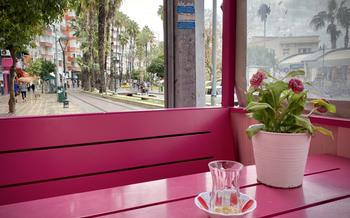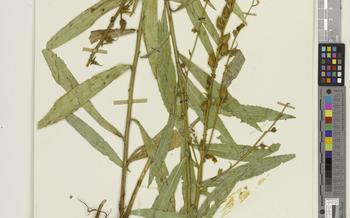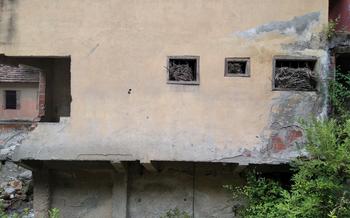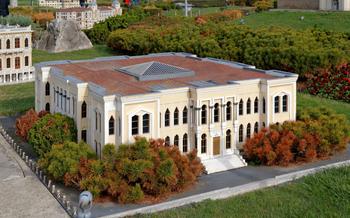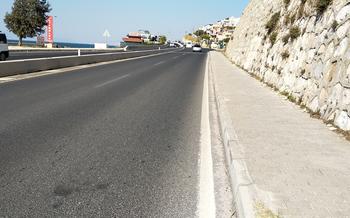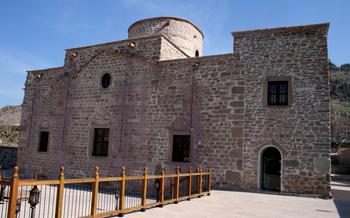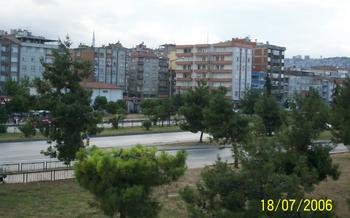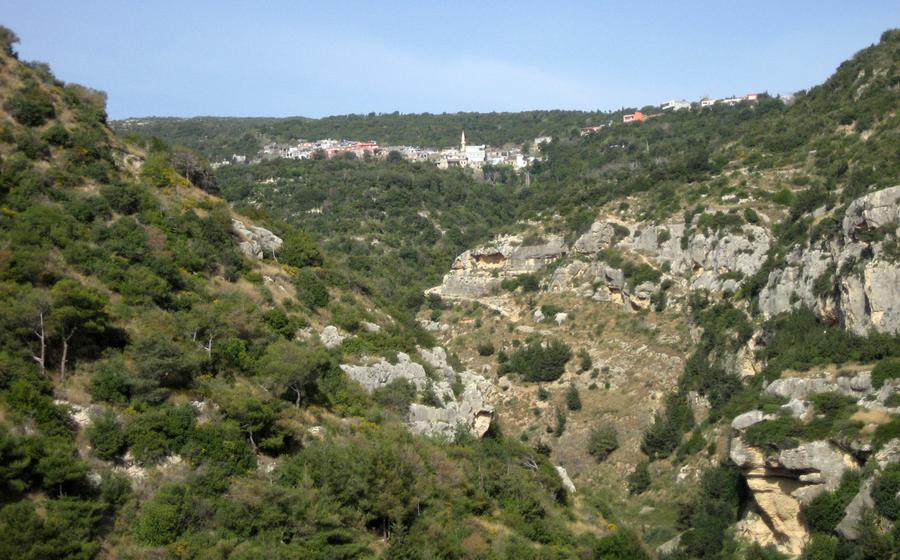
Hatay Turkish Bath Museum
- Hatay Turkish Bath Museum: Unveiling a Cultural Gem
- History and Origins
- Architectural Marvel
- Museum Exhibits and Displays
- The Central Dome
- Hall of Columns
- The Caldarium: A Sanctuary of Warmth and Relaxation
- The Tepidarium: A Transition to Relaxation and Warmth
- The Frigidarium: A Refreshing Contrast
- Educational Programs
- Events and Exhibitions
- Accessibility and Amenities
- Insider Tip: Unraveling a Hidden Gem
Hatay Turkish Bath Museum: Unveiling a Cultural Gem
The Hatay Turkish Bath Museum, nestled in the heart of the historic city of Antakya, is a testament to the rich cultural heritage of Turkey. Once a functioning bathhouse that served the community for centuries, this magnificent structure has been meticulously transformed into a museum, preserving the essence of Turkish bathing traditions while providing a glimpse into the past.
Historical significance The Hatay Turkish Bath, originally known as "Çardak Hamamı," was constructed in the 16th century during the Ottoman era. It served as a vital social and cultural hub for locals, offering a place for cleansing, relaxation, and socialization. The restoration of the bathhouse into a museum has ensured its preservation as a symbol of Turkey's cultural identity and architectural legacy.
Architectural features The museum's architectural design is a testament to the skill and artistry of Ottoman builders. Its striking domed ceilings, intricate tilework, and decorative elements create a visually stunning space that transports visitors back in time. The harmonious blend of architectural styles, from Byzantine to Islamic, showcases the diverse cultural influences that shaped the region.
Museum exhibits Inside the museum, visitors are greeted by a collection of artifacts, tools, and historical photographs that shed light on the fascinating history of Turkish baths. Interactive displays and educational panels provide insights into the bathing rituals, customs, and social significance of these communal spaces. The museum's exhibits offer a comprehensive understanding of the cultural and historical importance of Turkish baths.
Visitor experiences A visit to the Hatay Turkish Bath Museum is a multisensory experience that combines history, architecture, and culture. Visitors can wander through the various chambers, imagining the bustling atmosphere of a bygone era. The museum's serene ambiance and informative exhibits invite visitors to delve deeper into the rich traditions of Turkish bathing culture.
History and Origins
The Hatay Turkish Bath Museum stands as a testament to a rich and ancient bathing tradition that dates back to the Roman Empire. The concept of public baths, known as thermae, was integral to Roman culture, serving as centers for social interaction, cleansing, and relaxation. These bathhouses were elaborate structures, often adorned with intricate mosaics, sculptures, and frescoes, reflecting the importance placed on bathing rituals.
In the 6th century AD, the Byzantine Empire adopted and expanded upon the Roman bathing tradition, constructing grand bathhouses throughout their territories. The Hatay Turkish Bath Museum, originally built during this period, is a prime example of Byzantine architecture and engineering. It showcases the empire's mastery of construction techniques, featuring a complex system of heating and water distribution that ensured a consistent supply of hot and cold water.
During the Islamic period, the bathhouse underwent significant renovations and modifications to align with Islamic bathing customs and religious practices. The addition of separate bathing areas for men and women, as well as the incorporation of religious elements into the design, transformed the bathhouse into a culturally significant institution that served the community for centuries.
In the 20th century, recognizing the historical and cultural value of the bathhouse, the Turkish government undertook a comprehensive restoration project to preserve and protect this architectural gem. The restoration efforts aimed to maintain the bathhouse's original features while adapting it to serve as a museum, showcasing the rich history and traditions associated with Turkish baths.
Architectural Marvel
The Hatay Turkish Bath Museum stands out as an architectural marvel, showcasing the unique design and craftsmanship of its era. Its most striking feature is its series of domed ceilings, which provide a sense of grandeur and spaciousness. The domes are adorned with intricate tilework and decorative elements that reflect the artistic traditions of the region.
The walls of the bathhouse are embellished with intricate tilework, featuring vibrant colors and geometric patterns. These tiles not only add to the aesthetic appeal of the museum but also provide valuable insights into the artistic and cultural heritage of the time.
From the moment visitors step inside, they are greeted by an enchanting blend of architectural elements that transport them back in time. The Hatay Turkish Bath Museum serves as a testament to the ingenuity and creativity of its builders, who left behind a legacy that continues to amaze and inspire.
Museum Exhibits and Displays
The Hatay Turkish Bath Museum houses a collection of artifacts, tools, and historical photographs that provide visitors with a glimpse into the rich history and cultural significance of Turkish baths. Interactive displays and educational panels enhance the museum experience, allowing visitors to engage with the exhibits and learn more about the traditions and practices associated with Turkish bathing culture.
Artifacts and Tools:
The museum showcases a variety of artifacts and tools used in traditional Turkish baths, including copper basins, wooden bowls, scrubbing brushes, and massage stones. These items offer a tangible connection to the past and provide insights into the daily routines and rituals of bathhouse visitors.
Historical Photographs:
The museum's collection of historical photographs captures the essence of Turkish bath culture throughout the ages. These images depict bathhouses in their heyday, with people from all walks of life enjoying the rejuvenating and social benefits of these communal spaces.
Interactive Displays:
Interactive displays throughout the museum allow visitors to immerse themselves in the sights, sounds, and sensations of a traditional Turkish bath. Visitors can listen to the soothing sounds of flowing water, watch videos of bathing rituals, and even experience the sensation of steam and heat in a simulated bathhouse environment.
Educational Panels:
Educational panels provide detailed information on the history, architecture, and cultural significance of Turkish baths. Visitors can learn about the origins of bathing traditions, the evolution of bathhouse design, and the social and religious customs associated with these spaces.
The Central Dome
The central dome of the Hatay Turkish Bath Museum stands as the architectural masterpiece of the entire complex. Its intricate design, soaring height, and meticulous craftsmanship make it a sight to behold. The dome's curved surface is adorned with vibrant tiles forming geometric patterns and delicate floral motifs, creating a kaleidoscope of colors that dance in the sunlight.
As visitors enter the central chamber, their eyes are drawn upward to the majestic dome, which seems to float effortlessly above them. The natural light that filters through the dome's oculus creates a soft and ethereal glow, illuminating the space and casting intricate shadows on the walls. The central dome serves not only as a structural marvel but also as a symbol of harmony and balance, representing the convergence of architectural prowess and spiritual tranquility.
Hall of Columns
The Hall of Columns is a captivating sight within the Hatay Turkish Bath Museum. Rows upon rows of majestic marble columns, each with its own unique character, line the spacious hall. These architectural wonders, adorned with intricate carvings and delicate fluting, transport visitors back to an era of grandeur and craftsmanship. As you walk through the hall, the interplay of light and shadow creates a mystical ambiance, enhancing the allure of these ancient structures.
The Hall of Columns stands as a testament to the architectural prowess of the ancient builders who constructed this remarkable bathhouse. The columns, meticulously crafted from blocks of pristine marble, showcase the precision and attention to detail that went into every aspect of its design. Their sturdy presence evokes a sense of awe and admiration for the engineering feats of the past.
Beyond their structural significance, the columns also hold historical and cultural value. They have borne witness to countless conversations, laughter, and shared stories within the bathhouse's walls. Each column carries the whispers of history, as if they could recount tales of the many individuals who sought solace, rejuvenation, and connection beneath their watchful gaze.
The Hall of Columns is not merely a collection of architectural elements; it is a living testament to the enduring legacy of Turkish bath culture. It invites visitors to pause, reflect, and appreciate the artistry and heritage that have shaped this unique and captivating space.
The Caldarium: A Sanctuary of Warmth and Relaxation
Step into the caldarium, the heart of the ancient Roman bathhouse, and immerse yourself in a world of steam and heat. This room was designed to induce sweating and promote deep relaxation, a sanctuary where bathers could cleanse their bodies and minds.
The caldarium features marble seating platforms where bathers could recline and soak in the warm, steamy air. These platforms were strategically placed to maximize the heat exposure, allowing bathers to experience a deep and thorough cleanse.
Adjacent to the seating platforms, you'll find the soaking pools, inviting bathers to submerge themselves in the warm water. These pools were believed to have therapeutic properties, aiding in muscle relaxation and easing various ailments.
The caldarium served as a social space as well, where bathers could engage in conversation and enjoy each other's company. The warm, humid environment created a sense of camaraderie and relaxation, fostering a sense of community among the bathers.
The Tepidarium: A Transition to Relaxation and Warmth
The tepidarium served as an intermediate space, designed to ease the transition between the contrasting temperatures of the caldarium and the frigidarium. This warm room allowed bathers to gradually acclimatize to the changing temperatures, preventing sudden shocks to their systems.
The tepidarium featured decorative elements that enhanced its soothing ambiance. Intricate tilework adorned the walls, depicting scenes from mythology and nature. Marble benches and seating platforms provided comfortable resting spots for bathers to relax and socialize.
Beyond its practical purpose, the tepidarium also held cultural significance. It was a place where people could engage in conversation, share stories, and connect with one another. The gentle warmth and inviting atmosphere fostered a sense of camaraderie and relaxation.
Stepping into the tepidarium was like entering a tranquil haven, a space dedicated to unwinding and embracing the restorative powers of the bathhouse experience. It was a place to pause, reflect, and prepare for the invigorating plunge into the frigidarium that awaited.
The Frigidarium: A Refreshing Contrast
In the heart of the Hatay Turkish Bath Museum lies the frigidarium, a cold room that provides a refreshing contrast to the steamy heat of the caldarium. This chamber served as a place for bathers to cool down and revitalize their bodies after experiencing the intense heat of the hot room.
The frigidarium features a large plunge pool filled with cool water, inviting visitors to immerse themselves and experience a refreshing dip. The contrast between the extreme temperatures of the caldarium and the frigidarium stimulates blood circulation and invigorates the senses, leaving bathers feeling rejuvenated and revitalized.
Beyond its practical purpose, the frigidarium also holds aesthetic significance. Its walls are adorned with intricate tilework and decorative elements that create a visually stunning space. The interplay of light and shadow on the water's surface adds to the serene and calming ambiance of the room.
Whether seeking a refreshing respite from the heat or embracing the therapeutic benefits of contrast therapy, the frigidarium offers a unique and unforgettable experience for visitors to the Hatay Turkish Bath Museum.
Educational Programs
The Hatay Turkish Bath Museum offers a range of educational programs that bring the history and traditions of Turkish baths to life. These programs include:
-
Workshops and seminars: These sessions provide in-depth knowledge about the architecture, history, and cultural significance of Turkish baths. Experts in the field lead interactive discussions, allowing participants to engage with the subject matter and ask questions.
-
Lectures on Turkish bath culture: Renowned historians and scholars deliver lectures on various aspects of Turkish bath culture, such as bathing rituals, social customs, and health and relaxation practices. These lectures offer a deeper understanding of the role of Turkish baths in Turkish society throughout history.
-
Historical reenactments: The museum organizes historical reenactments that transport visitors back in time. Actors dressed in traditional attire demonstrate bathing rituals and customs, providing a glimpse into the daily lives of people who frequented these bathhouses centuries ago.
-
Interactive learning experiences: The museum has interactive displays and educational panels that allow visitors to explore the history and significance of Turkish baths at their own pace. These exhibits feature multimedia presentations, touchscreens, and hands-on activities that make learning fun and engaging.
These educational programs not only enhance the visitor experience but also contribute to the preservation and promotion of Turkish bath culture. They provide a platform for research, discussion, and knowledge sharing, ensuring that the rich traditions associated with these historical landmarks continue to be appreciated and understood by future generations.
Events and Exhibitions
The Hatay Turkish Bath Museum is not just a place for historical exploration; it also serves as a vibrant cultural hub that hosts a variety of events and exhibitions throughout the year. Temporary art exhibitions showcase the works of local and international artists, providing a platform for creative expression and artistic dialogue. Cultural events and performances celebrate the rich traditions of Hatay and the surrounding region, offering visitors a chance to immerse themselves in the local culture. Workshops on traditional crafts, such as pottery, weaving, and embroidery, provide hands-on learning experiences and allow visitors to connect with the artisans and their skills. These events and exhibitions transform the museum into a dynamic space that fosters cultural exchange, promotes creativity, and engages the community in meaningful ways.
Accessibility and Amenities
The Hatay Turkish Bath Museum is committed to providing a welcoming and inclusive experience for all visitors. Wheelchair accessibility is ensured with ramps and elevators, allowing everyone to explore the museum's wonders. Guided tours are available in multiple languages, catering to a diverse audience and ensuring that visitors from all corners of the world can delve into the history and significance of the bathhouse.
To enhance the visitor experience further, a charming souvenirs and gift shop offers a range of unique items inspired by the museum's collection. From traditional Turkish handicrafts to replicas of historical artifacts, visitors can take home a piece of the museum's allure. Rest areas and refreshment facilities provide a comfortable space for visitors to relax and recharge during their exploration.
Insider Tip: Unraveling a Hidden Gem
As you wander through the museum, keep an eye out for a discreet doorway tucked away in a corner. This unassuming entrance leads to a hidden chamber, a secret treasure trove that few visitors know about. Inside, you'll find yourself surrounded by ancient artifacts, forgotten inscriptions, and remnants of the bathhouse's rich history.
The chamber is a testament to the layers of history that lie beneath the surface of this remarkable place. It's an opportunity to glimpse into the lesser-known stories of the bathhouse, to uncover its hidden secrets and connect with its past in a unique and profound way.
Whether you're a history buff, an architecture enthusiast, or simply someone who appreciates hidden gems, this secret chamber is an experience not to be missed. It's a chance to go beyond the surface and truly delve into the heart of the Hatay Turkish Bath Museum.
So, as you explore the museum, remember to keep your eyes peeled for that hidden doorway. It's your ticket to an unforgettable journey through time, a chance to discover the untold stories that lie within these ancient walls.

